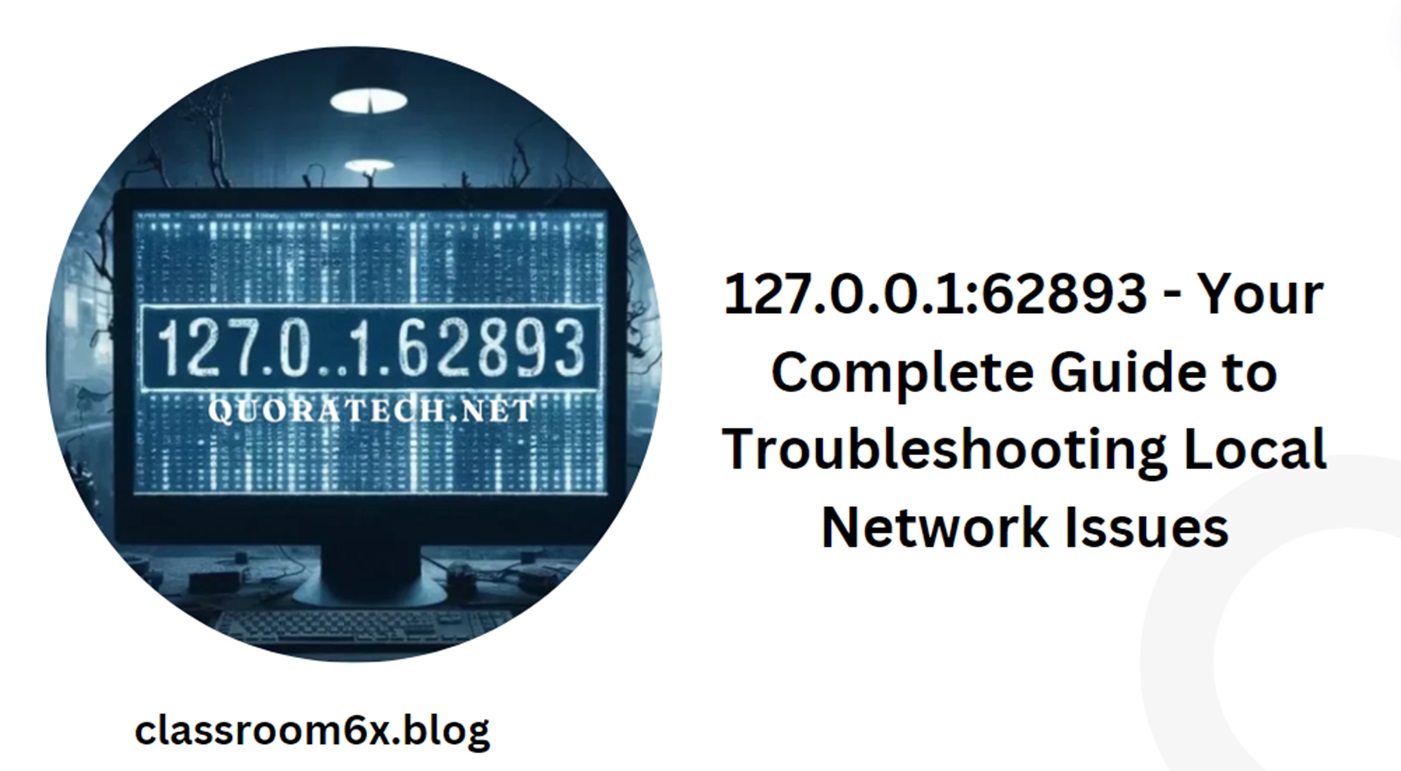
Introduction: 127.0.0.1:62893
In the realm of computer networking, IP addresses and port numbers are fundamental concepts that facilitate communication between devices and applications. The address “127.0.0.1:62893” might seem cryptic at first glance, but understanding it is essential for troubleshooting common errors encountered during local development and network configurations. This article aims to demystify “127.0.0.1:62893” and provide a comprehensive guide to troubleshooting issues related to it.
Table of Contents
Understanding 127.0.0.1
What is 127.0.0.1?
The IP address “127.0.0.1” is known as the loopback address or localhost. It is a special IP address reserved for use on the local machine. Any communication sent to this address is looped back to the same machine, effectively bypassing any network interfaces.
Importance of Loopback Address
The loopback address is crucial for testing and development. It allows developers to run applications and services on their local machines without exposing them to the broader network. This isolation ensures a secure environment for development and debugging.
Deciphering Port Numbers
What is a Port Number?
A port number is a numerical identifier in networking used to specify a particular process or service on a device. Port numbers range from 0 to 65535, with certain ranges reserved for specific types of services.
Common Port Number Ranges
- 0-1023: Well-known ports used for system services (e.g., HTTP on port 80, HTTPS on port 443).
- 1024-49151: Registered ports for user or vendor-specific applications.
- 49152-65535: Dynamic or private ports for temporary purposes, often assigned during runtime.
The Significance of Port 62893
Why Use High Port Numbers?
High port numbers, like 62893, are often used in development and testing environments to avoid conflicts with well-known ports. They provide flexibility and reduce the likelihood of clashes with other services running on the same machine.
Typical Use Cases
Port 62893 could be used by a variety of applications, including web servers, database servers, and other networked services. Developers often assign arbitrary high port numbers to avoid interference with default ports.
Common Errors with 127.0.0.1:62893
Connection Refused
Causes
- Service Not Running: The most common cause is that the service intended to run on port 62893 is not active.
- Firewall Restrictions: Local firewall settings may block connections to the specified port.
- Port Already in Use: Another application might already be using port 62893, causing a conflict.
Troubleshooting Steps
- Check Service Status: Ensure that the intended service is running. This can typically be done through the command line or the application’s interface.
- Review Firewall Settings: Verify that local firewall rules allow traffic on port 62893.
- Identify Port Usage: Use commands like
netstatorlsofto check if port 62893 is in use by another application.
Connection Timed Out
Causes
- Network Configuration Issues: Misconfigured network settings can cause timeout errors.
- Service Overload: The service running on port 62893 may be overloaded or unresponsive.
Troubleshooting Steps
- Verify Network Configuration: Ensure that network settings are correctly configured to allow communication on the loopback address.
- Check Service Load: Monitor the service’s performance to identify potential overloads or bottlenecks.
Access Denied
Causes
- Insufficient Permissions: The user attempting to access the service may lack the necessary permissions.
- Security Software Interference: Antivirus or other security software might block access to the port.
Troubleshooting Steps
- Adjust Permissions: Ensure that the user has the appropriate permissions to access the service on port 62893.
- Review Security Software: Check antivirus or security software logs and settings to identify any blocks or restrictions on port 62893.
Tools for Troubleshooting
Netstat
netstat is a command-line tool that displays network connections, routing tables, and interface statistics. It can be used to identify which ports are in use and by which processes.
Common Commands
netstat -an: Displays all active connections and listening ports.netstat -b: Shows the executable involved in creating each connection or listening port.
Telnet
telnet is a network protocol used for testing connectivity to remote machines. It can also be used to check the availability of specific ports on the local machine.
Common Commands
telnet 127.0.0.1 62893: Attempts to establish a connection to port 62893 on localhost.
lsof
lsof (List Open Files) is a command-line utility that displays information about files opened by processes. It can be used to check which application is using a specific port.
Common Commands
lsof -i :62893: Lists processes using port 62893.
Case Studies
Web Server Configuration
Scenario
A developer is running a local web server on 127.0.0.1:62893 but encounters a “connection refused” error.
Resolution
- Verify Server Status: The developer checks if the web server service is running using the command
systemctl status webserver. - Check Port Availability: Using
netstat -an | grep 62893, the developer confirms that port 62893 is not in use by another service. - Firewall Configuration: The developer adjusts local firewall settings to allow traffic on port 62893 using
ufw allow 62893.
Database Access
Scenario
A database administrator is unable to connect to a local database service running on 127.0.0.1:62893, receiving a “connection timed out” error.
Resolution
- Service Load: The administrator checks the database service load and identifies performance bottlenecks using monitoring tools.
- Network Settings: Reviewing network configuration, the administrator ensures correct routing and no misconfigurations affecting localhost traffic.
- Adjust Database Configuration: The administrator fine-tunes database settings to handle higher loads and improve responsiveness.
Best Practices
Regular Monitoring
Regularly monitor services and applications running on high port numbers like 62893 to ensure they are performing optimally and are accessible.
Security Considerations
Ensure that only authorized users have access to services running on localhost and that appropriate security measures, such as firewalls and access controls, are in place.
Documentation
Maintain thorough documentation of network configurations, including services running on specific ports, to facilitate troubleshooting and future reference.
Conclusion: 127.0.0.1:62893
Understanding “127.0.0.1:62893” and its role in local networking is crucial for developers, system administrators, and IT professionals. By grasping the significance of the loopback address and port numbers, and employing effective troubleshooting techniques, one can resolve common errors and ensure smooth operation of local services. Regular monitoring, security practices, and documentation further enhance the ability to manage and troubleshoot network configurations efficiently.



